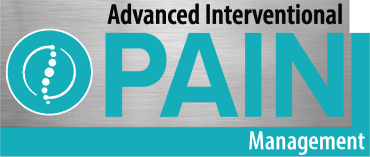Back pain is common and may develop from any number of causes, such as lumbar radiculopathy. When searching for medications, therapies, or treatments to get relief from your back pain, it’s important to know the cause.
At Advanced Interventional Pain Management — with offices in Texarkana, Hot Springs, Little Rock, El Dorado, Arkadelphia, and Mena, Arkansas — our pain management specialists, Dr. Jacob Abraham and Dr. Ryan Stuckey are experts at diagnosing and treating all types of back pain conditions.
Here, we want to talk to you about lumbar radiculopathy and the benefits of treatment.
What is lumbar radiculopathy?
Your spine consists of three major sections, including the cervical spine, thoracic spine, and lumbar spine. Your lumbar spine is your lower back and runs from bottom of your ribs to the top of your pelvis.
Made of five vertebral bones, your lumbar spine supports much of the weight of your upper body. Like the rest of your spine, the lumbar spine protects your spinal cord and serves as exit points for your spinal nerves.
Lumbar radiculopathy, also known as sciatica, is a pinching or compression of these spinal nerves as they exit this portion of your spine. You may develop lumbar radiculopathy if you have a herniated disc, degenerative disc disease, or spinal stenosis.
Nerve compression and injury may occur at any of the five vertebrae ― L1 to L5 — that make up your lumbar spine. Your symptoms may help us determine the location of the pinching.
For example, nerve injury in the upper portion of your lumbar spine (L2) may cause pain in your hips or thighs, while damage to the nerves in the lower portion of our lumbar spine (L5) may cause pain in your outer lower leg and top of your foot.
Diagnosing lumbar radiculopathy
We consider your symptoms an essential tool for helping us diagnose the underlying cause of your back pain. With lumbar radiculopathy, patients tend to experience pain that radiates from the lower back into the hip and buttocks and down into the leg, usually only on one side of the body.
The exact location of your pain and the type of symptoms you feel — tingling, numbness, or burning — helps us pinpoint the cause.
We also conduct a comprehensive physical exam and perform imaging tests such as MRI to evaluate the structure of your spine and look for areas of damage. We may also perform nerve conduction studies, which helps us determine if your pain is the result of nerve damage.
Treating lumbar radiculopathy
It’s estimated that up to 40% of people experience sciatica at some point during their lives. Depending on the cause of your lumbar radiculopathy, you may get relief from your discomfort with at-home care, such as heat and ice, nonsteroidal anti-inflammatory drugs (NSAIDs), and stretching exercises.
If your at-home treatments fail to provide significant relief, then we may recommend physical therapy, epidural steroid injections, or a selective nerve root block.
For patients with lumbar spinal stenosis, we may perform a minimally invasive procedure to place an interspinous spacer in the lumbar space to create more room and alleviate a pinched nerve.
Many people suffer with lower back pain for a long time before seeking help. But delaying treatment only prolongs your pain and suffering.
When it comes to lumbar radiculopathy, or what you may call sciatica, we can provide treatment that helps you get long-term relief. Call our office that’s nearest you or request an appointment online today.

